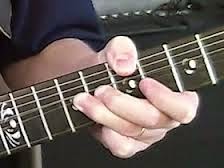String theory … explaining guitar solos that cry and sing
 |
| Please don’t ask me to explain this string theory graphic. |
However, one physicist from England’s Oxford University has just released a paper explaining a new kind of string theory: the study of how lead guitarists make their instruments wail, cry and sing.
Dr. David Grimes, who also just happens to be a guitarist, published the results of his study in the online science and medicine journal, PLOS ONE, this month.
 |
| Eric’s guitar gently wept (right) on George’s famous Beatles song |
These are but some examples. An accomplished guitarist’s tone and vibrato can be so intrinsic to that player that their idiosyncratic sound is as distinctive as a vocalist’s to a trained ear.”
One particular guitarist, in particular, who immediately springs my mind, has a style so distinctive, you don’t even need that ‘trained ear’, as Dr. Grimes infers, to know instantly who it is. I’m referring to Brian May of Queen, of course, who just happens to be a doctor of astrophysics as well as a rock guitarist.
 |
| Queen guitarist Dr. Brian May receiving his PhD in astronomy |
Is it simply coincidence that has Dr. May creating such a unique guitar sound or is he on the same wavelength as Dr. Grimes?
blues, it has developed a range of techniques which further distinguish it from its musical forebears. String-bending and vibrato add much to a guitarist’s palette, and as these techniques are heavily influenced by the physical constraints of the guitar and strings used, the underlying mechanics are worthy of analysis.
lead guitar playing, popularised by guitar virtuoso Edward Van Halen in the
late 1970s.
 |
| The colorful Mr. Frank Zappa |
For these techniques, the fretting force required to ‘sound’ a note
with or without picking becomes an important limiting factor and influences a player’s choice of string and guitar set-up.
Unlike more traditional instruments, there is also wide scope for modification and extension of tonal range by using external hardware.
One example of this is the vibrato system or “whammy-bar” which many guitars opt for; these are mechanical systems for adding extra vibrato and come in a variety of designs.
Rather misleadingly, they are sometimes referred to as tremolo bars, which is an unfortunate misnomer as tremolo is modulation of volume rather than pitch.
Such units dramatically increase the sonic scope of the instrument and have been employed by famous players such as Dave Gilmour, Brian May, Steve Vai, John Petrucci, Frank Zappa and Joe Satriani, amongst others.”





